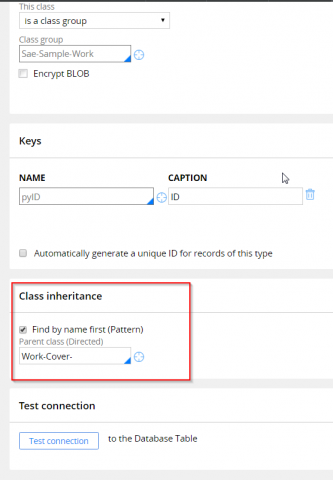Question
Virtusa
LK
Last activity: 6 Mar 2017 0:47 EST
Class Hierarchy
Can some please explain the following class hierarchy ?
-
Like (0)
-
Share this page Facebook Twitter LinkedIn Email Copying... Copied!
Accepted Solution
Pegasystems Inc.
IN
Hi,
Both under Work-Cover- class means that, that class Work-Cover- is eligible for both directed and pattern inheritence.
The hierarchy it follows to find the rule :
1)PegaSample-SupportRequest
2)PegaSample (Goes by pattern)
3)Work-Cover(Goes by directed as it is configured in class rule form of PegaSample-SupportRequest)
4)Work- (Goes by patter of Work-Cover)
5)@baseclass(finally it searchs in @baseclass, if rule is not found in the above classes)
Pegasystems Inc.
IN
Hi,
When you right click on the class and click on 'view inheritence', you will be able to see the inheritence of that class.
So during rule resolution, prpc resolves to find a rule by class first (where it preferes pattern inheritence at first, and later goes to directed inheritence)
So in the screenshot, it tries to find rule in PegaSampe-SupportRequest, if it doesn't find any related rule, it searches in PegaSample(pattern inheritence of the class), else it will try to find in Work-Cover- and so on.
Here Work-Cover- is the directed inheritence of the above class.It is mentioned in the class rule form as below.
Virtusa
LK
What is actually mean by both in Work-Cover-?
Pegasystems Inc.
US
Hi SameeraD5918,
"Both" Inheritance type for Work-Cover- means "Directed" and "Pattern" class inheritance.
Thanks,
Susan
Accepted Solution
Pegasystems Inc.
IN
Hi,
Both under Work-Cover- class means that, that class Work-Cover- is eligible for both directed and pattern inheritence.
The hierarchy it follows to find the rule :
1)PegaSample-SupportRequest
2)PegaSample (Goes by pattern)
3)Work-Cover(Goes by directed as it is configured in class rule form of PegaSample-SupportRequest)
4)Work- (Goes by patter of Work-Cover)
5)@baseclass(finally it searchs in @baseclass, if rule is not found in the above classes)
Pegasystems Inc.
US
More information:
class inheritance:
Class inheritance is the method by which a child class can use all of the rules defined for a parent class. The Pega 7 Platform supports two types of class inheritance: directed inheritance and pattern inheritance.
Both types of class inheritance allow rules of ancestor classes to be inherited. However, class inheritance does not apply to external classes, even if the class name contains a dash character.
directed inheritance:
Directed inheritance is the method by which a class inherits characteristics directly from a specified parent class, regardless of any defined pattern inheritance.
For example, the PegaSample-CustomerRequest class (part of the PegaSample sample application) employs directed inheritance, and its directed parent class is Work-Cover-DupByCus. Based on pattern inheritance, the parent class is Work-Object-.
pattern inheritance:
Pattern inheritance is an optional method by which a class inherits characteristics from other classes based on the parsing of class names and inheriting from classes it resembles in name.
The system determines the name of the parent class based on an initial portion or substring of the name of the class. You can set up pattern inheritance for a class in the Rule-Obj-Class rule, and pattern inheritance affects the first steps in the rule resolution algorithm.
More information:
class inheritance:
Class inheritance is the method by which a child class can use all of the rules defined for a parent class. The Pega 7 Platform supports two types of class inheritance: directed inheritance and pattern inheritance.
Both types of class inheritance allow rules of ancestor classes to be inherited. However, class inheritance does not apply to external classes, even if the class name contains a dash character.
directed inheritance:
Directed inheritance is the method by which a class inherits characteristics directly from a specified parent class, regardless of any defined pattern inheritance.
For example, the PegaSample-CustomerRequest class (part of the PegaSample sample application) employs directed inheritance, and its directed parent class is Work-Cover-DupByCus. Based on pattern inheritance, the parent class is Work-Object-.
pattern inheritance:
Pattern inheritance is an optional method by which a class inherits characteristics from other classes based on the parsing of class names and inheriting from classes it resembles in name.
The system determines the name of the parent class based on an initial portion or substring of the name of the class. You can set up pattern inheritance for a class in the Rule-Obj-Class rule, and pattern inheritance affects the first steps in the rule resolution algorithm.
https://community.pega.com/sites/default/files/help_v718/procomhelpmain.htm
Virtusa
LK
thanks for the help
